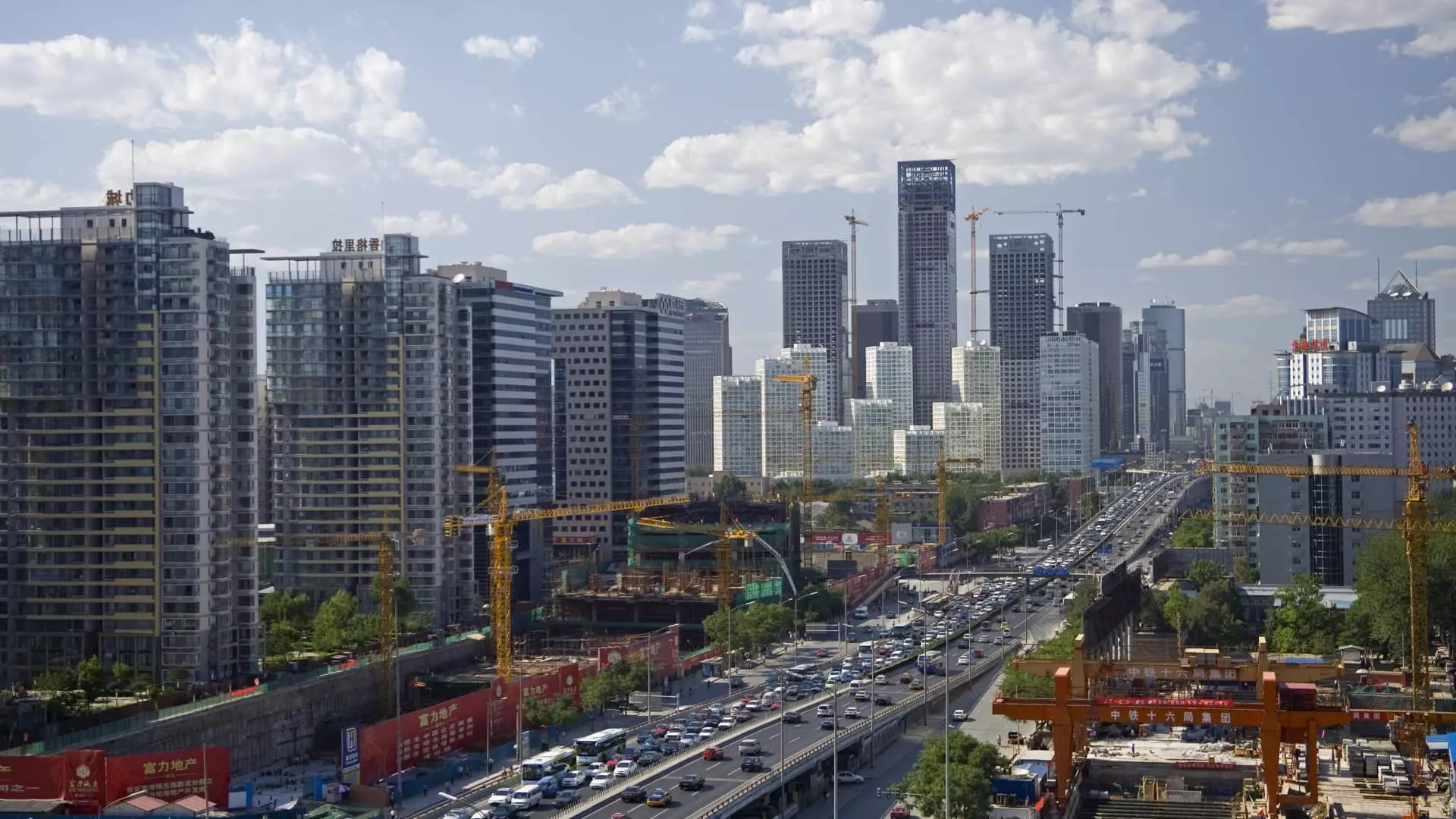In the first quarter of 2024, China’s economy showed resilience by expanding at 5.4%, surpassing expectations set by major analysts who projected a more conservative growth rate of 5.1%. This bump is not merely a stroke of luck; it reflects an ongoing recovery that began to take shape in late 2023 as a result of a broad policy stimulus aimed at rejuvenating various sectors. The figures suggest that China is still capable of weathering storms, particularly with retail sales jumping by 5.9% year-on-year in March, which significantly outperformed the anticipated 4.2% growth. Such statistics can instill a sense of optimism regarding China’s ability to sustain its economic momentum.
However, one must approach these numbers with cautious optimism. While they appear promising on the surface, they illuminate a complex web of challenges that lurk beneath the surface, threatening to unravel the gains recorded. Industrial output increased by 7.7%, a valuation that further bolsters the narrative of growth, yet it raises questions about sustainability and the potential repercussions of external pressures, particularly the ongoing trade disputes with the United States.
The Deadweight of Real Estate and Domestic Demand
Despite overall improvements, the real estate sector tells a different story. Tethered by a staggering 9.9% decline, real estate investment has become a significant drag on the economy, highlighting a crucial imbalance. While infrastructure and manufacturing investments have seen an uptick, the persistent woes of the real estate market underscore the hesitation among consumers and investors. This contrasts sharply with the jubilant headline growth numbers released by the statistics bureau, which may leave many wondering whether these figures truly encapsulate the health of the economy.
Moreover, the statistics indicate that domestic demand remains insufficient to cruise towards a more stable economic environment. With the urban unemployment rate dipping to 5.2%, down from a two-year high, there is a semblance of stability. Yet, without a robust internal consumer base, the continuity of this recovery could be jeopardized. There is a palpable need for initiatives focused on bolstering domestic consumption to avoid over-reliance on external markets, a strategy that may backfire as global tensions simmer.
External Threats and the Trade War Fallout
China’s leadership has ambitious plans, yet the backdrop of escalating trade tensions with the United States looms large. President Trump’s tariff policies have inflicted substantial pain, with duties on Chinese goods rising to a staggering 145%. Economists are wary; the initial optimistic gains may mask deeper vulnerabilities that could surface in the months to come. As Morgan Stanley and other investment banks revise China’s growth forecasts downwards, the gravitas of the situation becomes undeniable. UBS goes so far as to predict a mere 3.4% expansion for the year, arguing that the ramifications of U.S. tariffs will cut China’s exports significantly, with estimated declines of up to two-thirds in specific markets.
The dilemma posed by these tariffs is profound: while policymakers are cognizant of the need for proactive measures to stimulate the domestic economy, they must also navigate the bureaucratic and political complexities of engaging with a hostile trade partner. The statistics bureau’s calls for implementing more effective macro policies underscore a desperate hope that the worst may be mitigated, but the tangible challenges may prove to be formidable.
Innovation: A Double-Edged Sword
In this climate of uncertainty, China’s technological sector offers a faint glimmer of optimism. The emergence of startups like DeepSeek, which announced significant advancements in artificial intelligence that rival U.S.-based OpenAI, showcases the innovative potential lying within China’s borders. However, this progress is contingent upon a stable geopolitical environment that fosters growth rather than frictions. Innovation can indeed act as a catalyst for economic diversification and resilience, but if tensions continue to mount, even the brightest technological breakthroughs may struggle to gain traction internationally.
Moreover, as Chinese officials grapple with the reality of a multifaceted economic landscape, the need for targeted stimulus measures focusing not only on technological growth but also on domestic consumption becomes increasingly urgent. Economic policy must pivot away from an over-reliance on exports, showcasing a more balanced approach that champions domestic enterprise alongside innovation.
The road ahead for China is fraught with challenges, but it is also peppered with the potential for reinvention. It will require creative policymaking that embraces change while grounding itself in the realities of a global economy that is anything but predictable. As we observe this unfolding economic narrative, the true mettle of China’s leadership and the resilience of its economy will be tested.

Leave a Reply